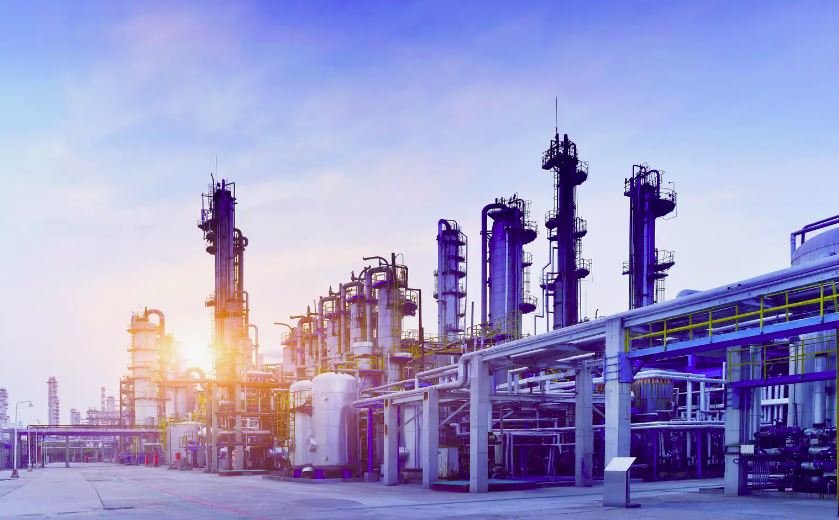Top Industrial Oils for High-Performance Operations
Understanding Industrial Oils
Key Functions of Industrial Oils
Lubrication: Reduces friction between moving parts, decreasing wear and tear.
Cooling: Dissipates heat generated by machinery during operation.
Corrosion Protection: Forms a protective layer to prevent rust and corrosion.
Cleaning: Flushes away debris, dirt, and contaminants from machinery components.
Seal Formation: Helps in forming seals to prevent leakage of fluids.
Types of Industrial Oils

Hydraulic Fluids
Hydraulic fluids are used in hydraulic systems to transmit power and lubricate components. They operate under high pressure and need to be formulated to withstand the intense conditions they encounter.
Characteristics and Benefits:
High Pressure Tolerance: Hydraulic fluids can endure extreme pressures without breaking down, which is essential for efficient power transmission.
Lubrication: Provides excellent lubrication to reduce friction between moving parts in hydraulic systems.
Anti-Foaming Properties: Prevents the formation of foam, which can reduce the efficiency of hydraulic systems and lead to operational issues.
Oxidation Resistance: Resists oxidation to maintain performance and prevent the formation of sludge or varnish.
Applications:
Hydraulic fluids are used in various applications, including:
Construction Equipment: Such as excavators, bulldozers, and loaders.
Industrial Machinery: For presses, lifts, and automated systems.
Aircraft Systems: To ensure reliable operation of hydraulic flight controls and landing gear.
Compressor Oils
Compressor oils are designed for use in air and gas compressors, providing lubrication and cooling to critical components.
Characteristics and Benefits:
High Thermal Stability: Compressor oils maintain their properties at high temperatures, which is crucial for preventing overheating and ensuring the longevity of the compressor.
Oxidation Resistance: They resist oxidation, which helps in maintaining the oil’s performance and prevents the formation of harmful deposits.
Low Pour Point: These oils remain fluid at low temperatures, ensuring consistent operation in cold environments.
Anti-Foaming Properties: Helps in maintaining the efficiency of the compressor by preventing foam formation.
Applications:
Compressor oils are utilized in:
Air Compressors: To lubricate and cool moving parts.
Gas Compressors: For natural gas and other gases in industrial processes.
Refrigeration Systems: In cooling units and air conditioning systems.
3. Gear Oils
Gear oils are formulated for lubrication in gear systems, essential for reducing friction and preventing wear in gears and bearings.
Characteristics and Benefits:
Extreme Pressure (EP) Additives: Contains additives that protect gears under high loads and extreme pressure conditions.
Wear Protection: Offers superior protection against wear and tear, extending the life of gears and bearings.
Corrosion Protection: Helps in preventing rust and corrosion, which can damage gear components.
Thermal Stability: Maintains its properties at high temperatures to ensure consistent performance.
Applications:
Gear oils are used in:
Automotive Transmissions: To ensure smooth gear shifting and operation.
Industrial Gearboxes: In manufacturing and processing equipment.
Heavy Machinery: Such as construction equipment and agricultural machinery.
4. Cutting Oils
Cutting oils are employed in machining operations to cool and lubricate cutting tools and workpieces, enhancing the precision and efficiency of the machining process.
Characteristics and Benefits:
Cooling Properties: Dissipates heat generated during machining to prevent overheating and tool damage.
Lubrication: Provides excellent lubrication to reduce friction between the cutting tool and workpiece, extending tool life.
Cleanliness: Helps in flushing away metal chips and debris, maintaining a clean working environment.
Enhanced Machining Performance: Improves surface finish and accuracy of the machined parts.
Applications:
Cutting oils are used in:
Turning: For metalworking lathes and turning operations.
Drilling: To lubricate and cool drill bits during drilling operations.
Milling: In milling machines for precision cutting and shaping of metal workpieces.
5. Turbine Oils
Turbine oils are designed for lubrication and cooling in steam and gas turbines. They are formulated to withstand high temperatures and resist oxidation.
Characteristics and Benefits:
High Thermal Stability: Operates effectively at high temperatures, which is essential for turbine performance.
Oxidation Resistance: Resists oxidation, helping to maintain oil performance and prevent the formation of harmful deposits.
Foam Control: Controls foam formation, which can impact the efficiency of the turbine.
Low Volatility: Ensures minimal evaporation losses and stable performance over time.
Applications:
Turbine oils are used in:
Power Generation Turbines: For generating electricity in power plants.
Marine Turbines: In ships and offshore platforms.
Industrial Turbines: In various industrial applications requiring turbine systems.
6. Food-Grade Oils
Food-grade oils are formulated to meet safety standards for use in food processing environments. They are designed to prevent contamination while providing effective lubrication.
Characteristics and Benefits:
Safety Compliance: Complies with safety regulations to ensure that no contaminants are introduced into food products.
Non-Toxic: Made from non-toxic ingredients, ensuring food safety and compliance with health standards.
Lubrication and Protection: Provides effective lubrication and protection for equipment used in food processing.
High Purity: Ensures that the oil is free from harmful additives and contaminants.
Applications:
Food-grade oils are used in:
Food Processing Plants: For machinery and equipment in contact with food products.
Packaging Machines: To ensure smooth operation and prevent contamination.
Bottling and Filling Equipment: In bottling plants and filling lines.
Factors to Consider When Choosing Industrial Oils

Selecting the appropriate industrial oil involves several considerations to ensure optimal performance and compatibility with equipment. Here are some critical factors to consider:
1. Operating Conditions
Understanding the operating conditions of your equipment is crucial. Factors such as temperature, pressure, and load influence the choice of oil. For example, equipment operating at high temperatures requires oils with high thermal stability.
2. Compatibility
Ensure that the industrial oil is compatible with the materials used in your equipment. Incompatible oils can lead to chemical reactions that may damage the equipment and reduce performance. Compatibility with seals, gaskets, and other materials is essential to prevent leaks and operational issues.

